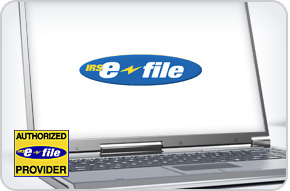
Theme 6: Understanding the IRSLesson 3: Methods of Filing

Most people who work need to file a tax return. Benefits of electronically preparing and transmitting tax returns include increased accuracy, faster refunds, and the ability to file federal and state returns simultaneously.
|
materials:Activities
Activity 1: Tax Scrambler Unscramble tax vocabulary. Activity 2: Tax Help Select the best electronic filing option. Activity 3: E-file Scavenger Hunt Search the IRS Web site for information on electronic filing. Assessment
Complete the assessment page to test your understanding of the different Methods of Filing. |
| quick check |
|
Who benefits from electronic filing of tax returns?
|
| tax trivia |
|
Did You Know?
On January 24, 1986, the first electronic transmission of tax return data from a preparer to the IRS was completed. By 1989, taxpayers in 36 states could file their taxes electronically, and by 1990, taxpayers throughout the country who expected a refund could file electronically.
Test your tax trivia knowledge by answering the following multiple-choice question. To assess your answer, click the Check My Answers button. |
